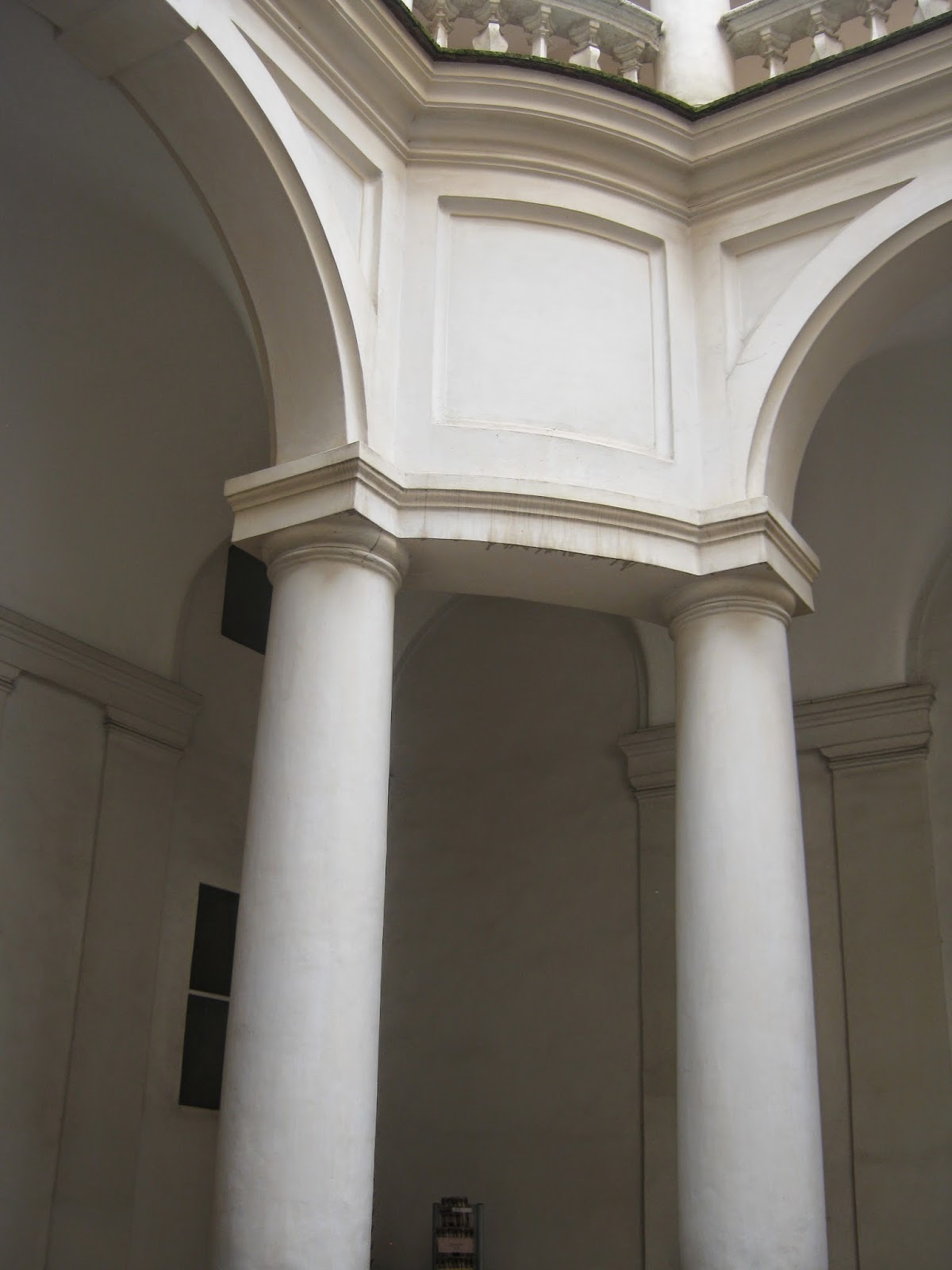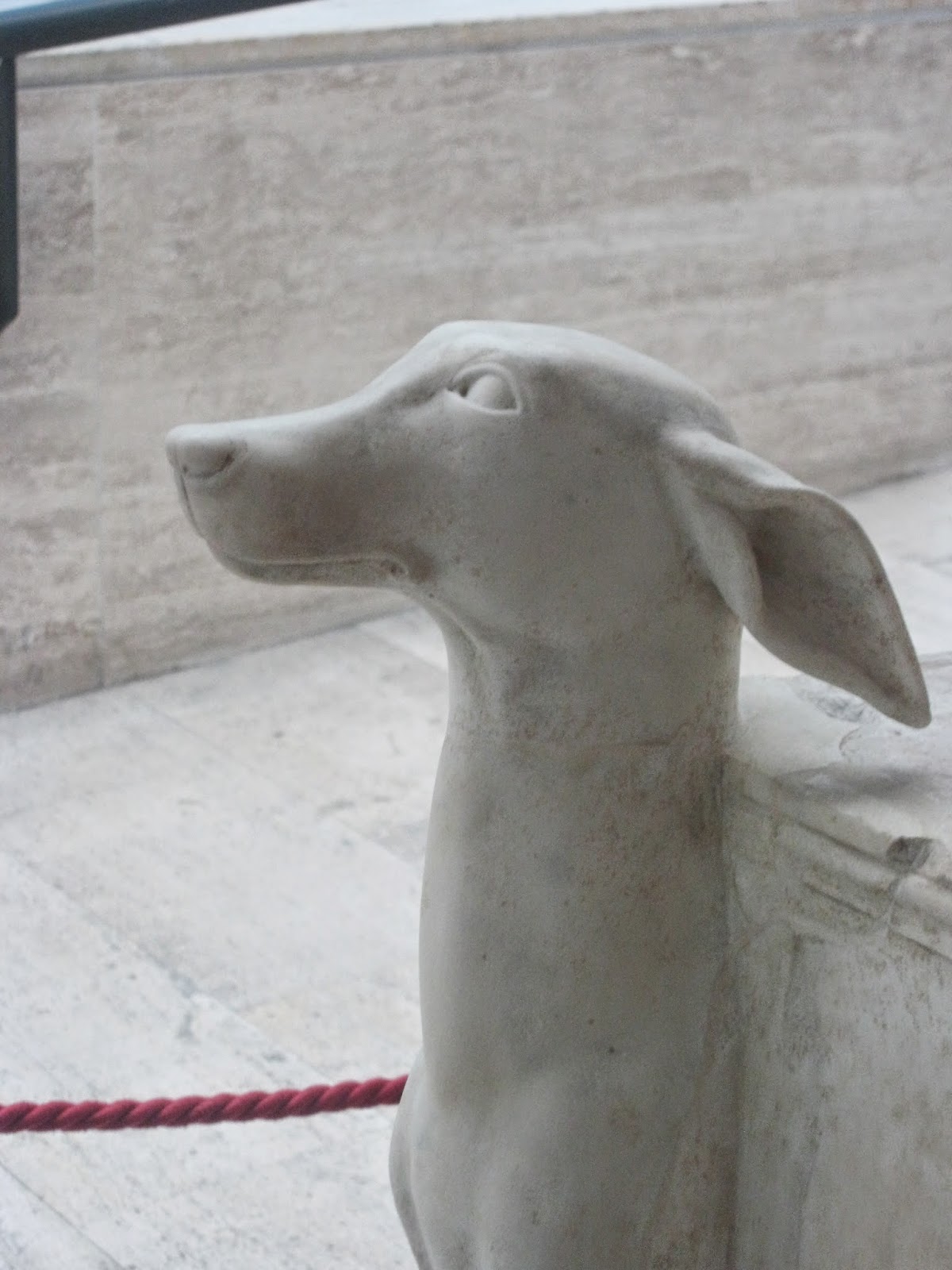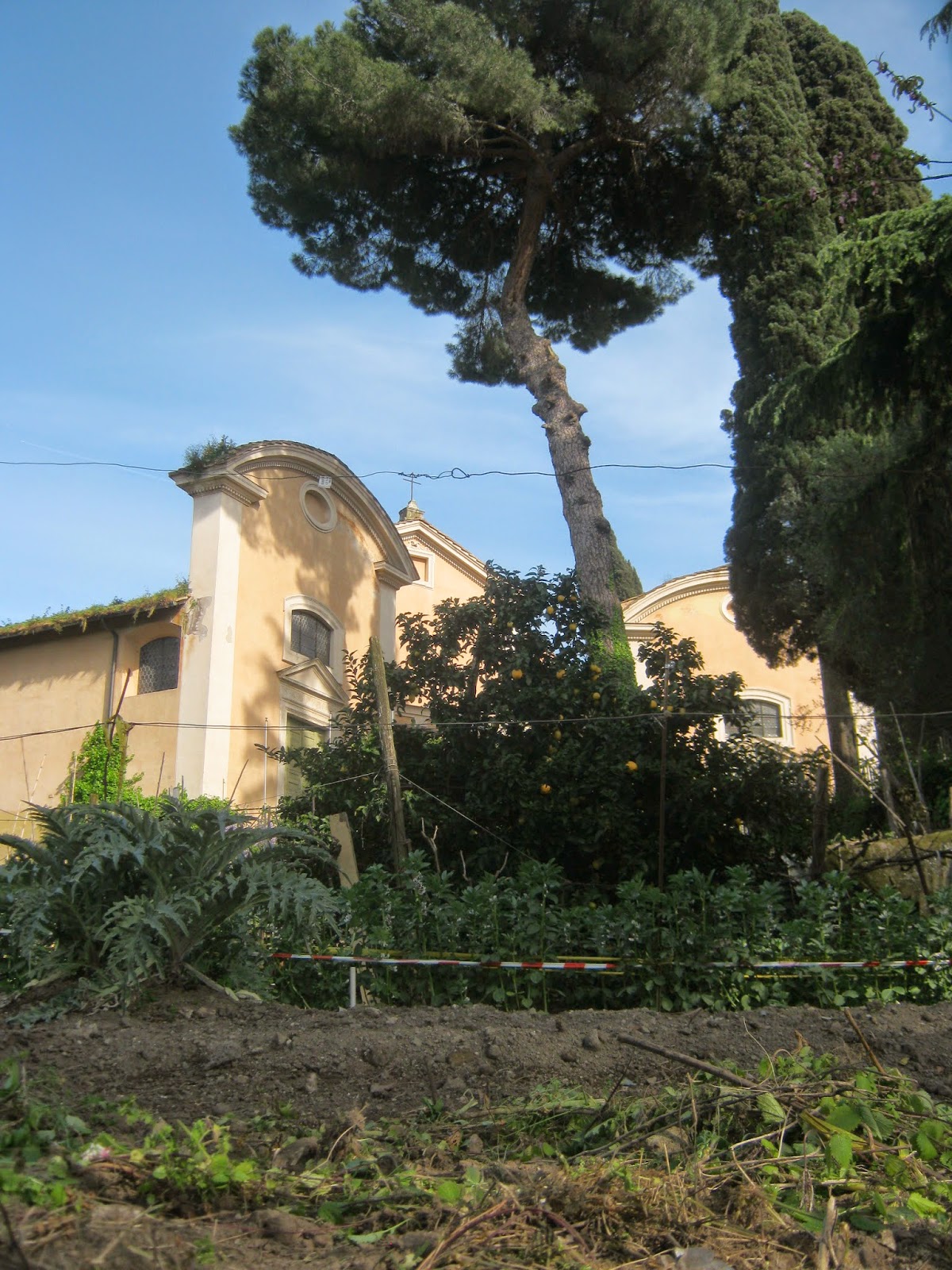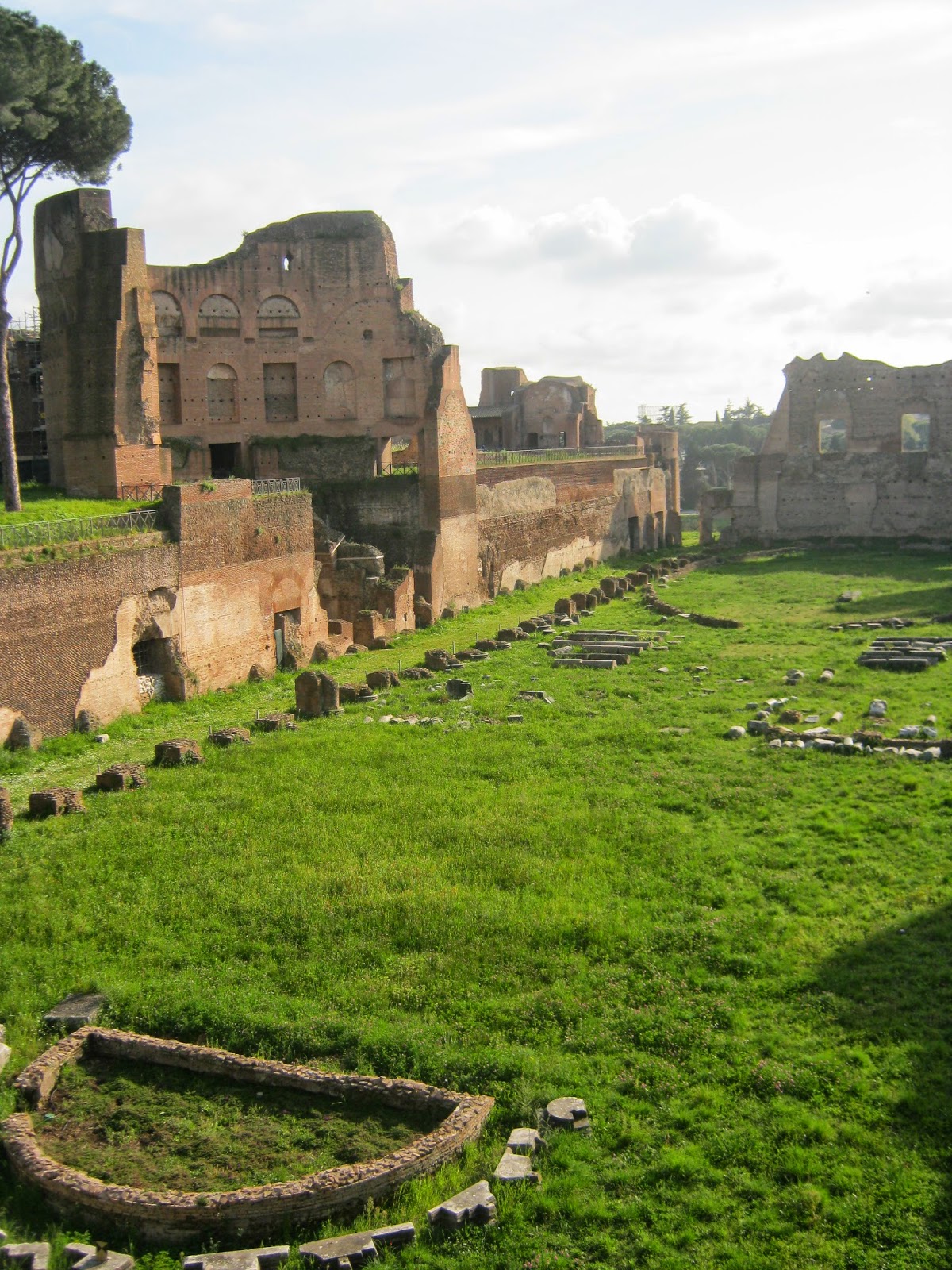San Carlino alla Quattro Fontana has to be the most wonderful baroque church in Rome. It's probably one of the smallest, but shows that the designer, Borromini, was a master architect. The site is small and difficult (one side is not at right angles because of an existing street) but Borromini managed to create a church, a cloister and a convent on this tiny area. The ceiling is a wonder, the intricate coffering other-worldly. I'll let the pictures tell the story.
Borromini enlivens the composition by putting a gentle curve in the wall supporting the corners of the upper storey of the cloister.
The cloister
Borromini and his rival Bernini shaped the Roman Baroque style. They were very different personalities, and clashed several times. Bernini was a gregarious extrovert with influential friends and contacts, Borromini a quiet loner who was often bad-tempered and obsessive. This church is Borromini's masterpiece.
The Triton Fountain at Piazza Barberini
Up to the top of the Spanish Steps and down them, thinking of the scene in Fellini's Roma where hippies and drugged- up drop outs drape themselves around the balustrades. Just tourists now, and the usual tourist tat. Stopped at Babbington's Tea Shop for a cup of Earl Grey and some delicious little cakes.
Then to the Ara Pacis Augustae, the Altar of Augustan Peace. Many years ago, I had to write my first ever Art History assignment on a comparison of the Ara Pacis and the Parthenon Frieze, so I was very interested to see this. It has been recently housed in a new museum building of its own, with appropriate displays of the history and symbolism of the altar. It was basically a PR exercise for Augustus, celebrating the achievements of his Julio-Claudian family and the Pax Romana that he saw himself as bringing to the world. (Pity about the slaves and the massive standing army). The altar was buried for many centuries under earth and silt from the river.
Some of the Julio-Claudians
Finally today, I walked up to the Capitoline Museums, walking along Via del Corso, which follows the line of the ancient Roman road, the Via Flaminia, the main road from Rome to the north of
Italy.
There are two museums on the Capitoline Hill, but I only went to one, which houses the original of the equestrian statue of Marcus Aurelius (a copy is outside in the Piazza) and other antique sculpture, plus the remains of the Temple of Jupiter that used to stand here.
Colossal foot of Constantine.
Colossal head of Constantine.
Quite a resemblance here. Colossal head of me.
Boy removing a thorn from his foot - Greek statue
Marcus Aurelius equestrian statue
I liked this better than the Marcus. This was the base of a statue, probably of the Goddess Diana, as they are hunting dogs. The artist has captured the dogginess of the dogs perfectly, alert, all ready to take off after something.
An evening view of Rome from a window in the museum.

































































